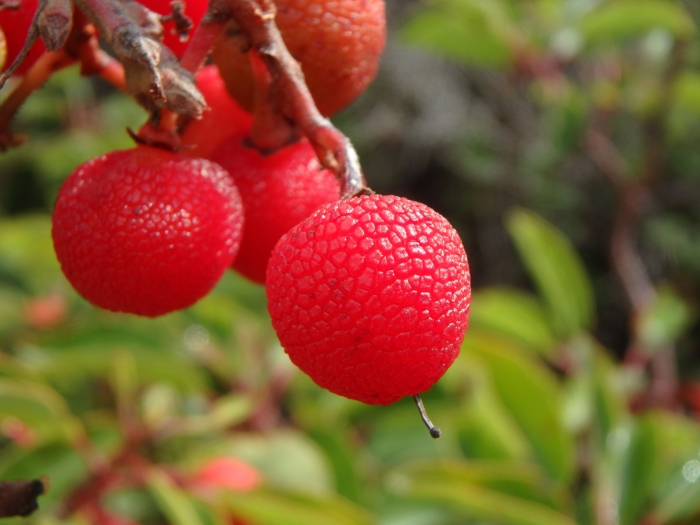Greek Strawberry Tree
(Arbutus andrachne)
Greek Strawberry Tree (Arbutus andrachne)
/
/

Daniel Cahen
CC BY 4.0
Image By:
Daniel Cahen
Recorded By:
Copyright:
CC BY 4.0
Copyright Notice:
Photo by: Daniel Cahen | License Type: CC BY 4.0 | License URL: http://creativecommons.org/licenses/by/4.0/ | Rights Holder: Daniel Cahen | Publisher: iNaturalist | Date Created: 2018-11-23T10:56:29-08:00 |























































Estimated Native Range
Summary
Arbutus andrachne, commonly known as Greek Strawberry Tree, is an evergreen tree or shrub native to the rocky and scrubby hillsides of the Eastern Mediterranean, including Greece, Turkey, and the Middle East. It typically reaches a height of up to 12 meters (39 feet) and is known for its striking exfoliating bark, which peels away in the summer to reveal a smooth surface with a pistachio green color that gradually changes to a beautiful orange-brown. The Greek Strawberry Tree has small, bell-shaped white or yellowish-green flowers that bloom in spring, followed by spherical, red to orange berries that ripen in autumn. These fruits are edible and, when dried, are enjoyed as a sweet, chewy treat reminiscent of candy.
The Greek Strawberry Tree is valued for its ornamental bark, evergreen foliage, and attractive fruits, making it a popular choice for Mediterranean gardens, urban landscapes, and as a specimen plant. It is drought-tolerant once established, making it suitable for xeriscaping and gardens with low water availability. While it prefers well-drained soils, it is adaptable to various soil types, provided they are not waterlogged. It is also relatively low-maintenance, requiring minimal pruning. However, it can be susceptible to root rot in poorly drained soils and may suffer from pests such as scale insects.CC BY-SA 4.0
The Greek Strawberry Tree is valued for its ornamental bark, evergreen foliage, and attractive fruits, making it a popular choice for Mediterranean gardens, urban landscapes, and as a specimen plant. It is drought-tolerant once established, making it suitable for xeriscaping and gardens with low water availability. While it prefers well-drained soils, it is adaptable to various soil types, provided they are not waterlogged. It is also relatively low-maintenance, requiring minimal pruning. However, it can be susceptible to root rot in poorly drained soils and may suffer from pests such as scale insects.CC BY-SA 4.0
Plant Description
- Plant Type: Tree
- Height: 10-40 feet
- Width: 20-40 feet
- Growth Rate: Slow
- Flower Color: White, Green
- Flowering Season: Spring
- Leaf Retention: Evergreen
Growth Requirements
- Sun: Full Sun, Part Shade
- Water: Low, Medium
- Drainage: Fast, Medium
Common Uses
Bee Garden, Bird Garden, Butterfly Garden, Drought Tolerant, Edible*Disclaimer: Easyscape's listed plant edibility is for informational use. Always verify the safety and proper identification of any plant before consumption., Fragrant, Hedges, Hummingbird Garden, Low Maintenance, Salt Tolerant
Natural Habitat
Rocky and scrubby hillsides of the Eastern Mediterranean
Other Names
Common Names: Grecian Strawberrytree, Eastern Strawberry-Tree, Småfruktigt Smultronträd, Östlicher Erdbeerbaum
Scientific Names: , Arbutus andrachne, Andrachne frutescens, Arbutus andrachne var. angutiserrata, Arbutus lucida, Arbutus milleri, Arbutus sieberi,
GBIF Accepted Name: Arbutus andrachne L.